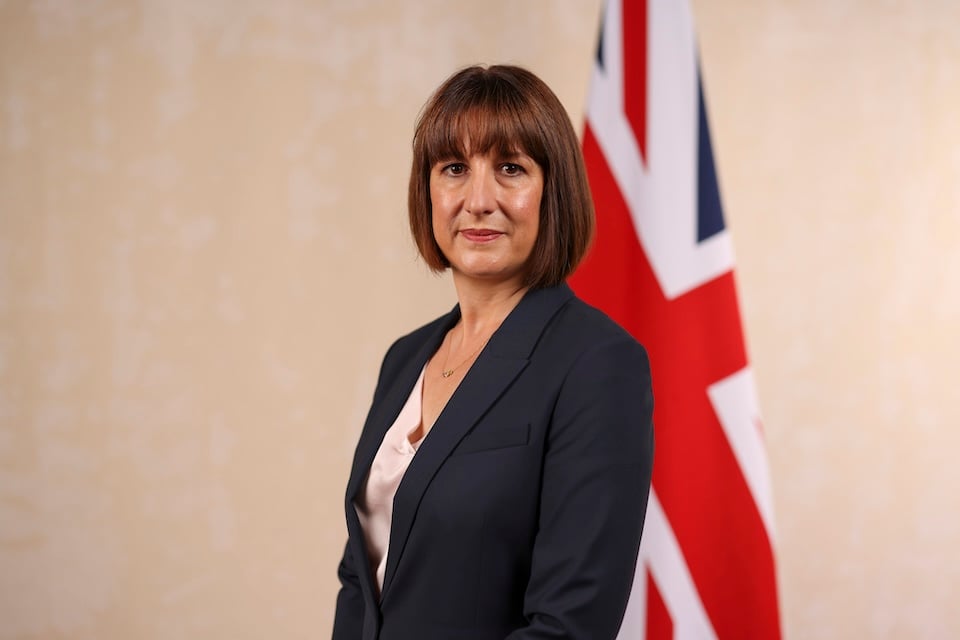The Chancellor, Rachel Reeves, has committed to spending £2.6 billion to decarbonise transport over the next three years in the UK's first multi-year spending review since 2021.
The £2.6bn includes £1.4bn to support the continued uptake of electric vehicles, including zero-emission vans and heavy goods vehicles (HGVs).
Some £400 million will also be allocated to support the rollout of charging infrastructure, building on the almost 80,000 public charging devices already available.
Toby Poston, chief executive of the British Vehicle Rental and Leasing Association (BVRLA), said: “The Government is clearly committed to its road transport decarbonisation targets and giving serious thought to how it achieves them.
“The mandate flexibilities announced in April relieved the pressure on EV supply, today’s cash commitment could give a much-needed boost to demand.
“This £1.4bn could make a big difference in driving stronger and wider demand for vans, trucks and used electric vehicles.
“We will continue to work with colleagues at OZEV to highlight how this money can achieve the best return on investment.”
Mike Hawes, chief executive of automotive trade body, the Society of Motor Manufacturers and Traders (SMMT), welcomed support to drive the uptake of zero-emission vehicles, but said that more “substantive measures” to incentivise private consumer demand are still needed if Government targets are to be met.
“Government has already made great efforts to support a critical industry facing significant geopolitical challenges but without market-making interventions, that world-leading pace of transition may need to be reviewed,” he warned.
The Spending Review sets the day-to-day budgets of Government departments over the next three years (from 2026-2029), used to pay staff and deliver public services.
It also sets their investment budgets until the end of the decade, to pay for new infrastructure.
Further transport spending revealed in the Spending Review includes £15.6bn by 2031-32 to support locally elected mayors in city regions invest in local transport priorities including zero emission buses, trams and local rail.
The Treasury also announced the largest multi-year settlement for London in over a decade, with £2bn of funding over the next three years for Transport for London’s (TfL) capital renewals programme.
Meanwhile, £24bn of capital funding has been allocated from 2026-30 to maintain and improve motorways and local roads.
This funding increase, says the Treasury, will allow National Highways and local authorities to invest in significantly improving the long-term condition of England’s road network, delivering faster, safer and more reliable journeys.
Furthermore, it has committed to spend £616m to build and maintain walking and cycling infrastructure.
RAC head of policy Simon Williams said: “Giving councils the certainty of longer-term funding to fix their roads is something we’ve called for many years, so this is excellent news.
“Local authorities now have a golden opportunity to end the cycle of merely filling potholes and instead begin to be much more proactive in their maintenance.
“This must include both more surface dressing to keep decent roads in good condition and resurfacing those that are at the end of their lives. It’s incumbent on councils to grasp this new opportunity and show all road users how it’s making a genuine difference in the quality of the roads they use every day.”
Jack Cousens, head of roads policy for the AA, added: “Investment in EV charging will spur more businesses and travellers who rely on their cars to convert to electric vehicles. However, more needs to be done to help people switch such as equalising VAT on out-of-home charging and discounting VED rates.”
However, David Giles, chair of the Asphalt Industry Alliance (AIA), believes that without a long-term commitment to maintaining the country's local roads in the Spending Review, the Government will face an even bigger bill to put them right in the future.
“Local authorities have told us they need their highway budgets to more than double for the next five to 10 years if they are going to be able to address the backlog of repairs, which is now almost £17bn in England and Wales,” he said.
“So, while the Government’s commitment to additional funding for the 2025/26 financial year – the short-term cash injection with greater accountability announced in December – was welcome, it is unlikely to improve structural conditions or reduce road user complaints.
“It looks like overall DfT roads funding to 2030 has been cut to £24bn (for both National Highways and local authorities) but further clarity on who will receive what share, how and when, is not evident. Nor is the level to which MHCLG (Ministry of Housing, Communities and Local Government) resource funding allocations for highway maintenance may be impacted.”
In terms of Government funding, the Department for Transport (DfT) loses 5% a year over the next three years.
The Treasury says this is primarily driven by a declining rail passenger services subsidy, as passenger ridership and revenue continue to recover post Covid-19, and efficiencies and savings are made through public ownership.
It also expects to find efficiencies through the use of artificial intelligence (AI) to increase automation in DfT’s executive agencies, such as the Driving and Vehicle Licensing Authority (DVLA).
Efficiencies, says the Treasury, will also be delivered through a combination of changes such as the DfT becoming a “smaller, more skilled, and more agile department”.
Mike Nakrani, CEO of Vev, welcomed the four-fold increase in local transport grants by the end of this Parliament, following last week's announcement on investing more than £15bn in transport networks across the North, Midlands and South-West of England.
“The projects outlined are a critical step forward in the delivery of more efficient, cleaner, smarter and accessible mass transportation in regions that will benefit hugely from these developments,” he said.
“VEV’s support of decarbonisation strategies across transport networks is well established. We have major projects underway across the country, bringing invaluable data and learnings for continuous improvements and efficiency gains – such as our work to deliver electric charging hubs for Stagecoach public bus networks across the UK.
“What’s critical is to ensure that these investments are geared towards new technologies and innovations that make the most of an increasingly renewable grid.
“Whether we’re moving people, goods or waste, electrified transport networks are a no regrets answer to unlocking a cleaner, more comfortable transportation system for all.”
Michael Shaw, CEO of Aegis Energy, added: “The commitment to electric vehicles, particularly vans and HGVs, is a vital step toward a lower-emission future.
“It’s especially encouraging to see £400m ringfenced for the rollout of charging infrastructure. This investment must be focused on delivering a public charging network that is reliable, accessible, and fit for commercial vehicle use.
“The commercial vehicle sector is responsible for 10% of UK emissions but decarbonising it at scale means creating confidence in infrastructure, not just vehicles.
“Infrastructure developers are already making progress, but a joined-up approach between government, developers and fleet operators will be key to accelerating the transition.”
Richard Earl, head of research and development at EO Charging, wants to know how the funding will be distributed. He asked: “How much will be assigned to the electrification of transport, and how much will be assigned to the upgrade of the national grid and other electrical infrastructure?
“While there is growing investment in EV infrastructure, the current network remains insufficient and unevenly distributed, presenting a major barrier to fleet electrification efforts,” he said. “With just 10 years until the Government’s ZEV mandate takes effect, progress needs to accelerate.
“Our customers across the country are committed to transitioning to clean energy and meeting the Government’s targets, but they can only do this if the UK has the infrastructure that enables them to do so.”






















martinwinlow - 12/06/2025 11:53
And not a single mention of the 'H' word... Things *are* looking up!